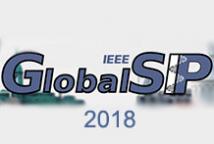
The 6th IEEE Global Conference on Signal and Information Processing (GlobalSIP) focuses on signal and information processing with an emphasis on up-and-coming signal processing themes. The conference features world-class plenary speeches, distinguished symposium talks, tutorials, exhibits, oral and poster sessions, and panels. GlobalSIP is comprised of co-located General Symposium and symposia selected based on responses to the call-for-symposia proposals.
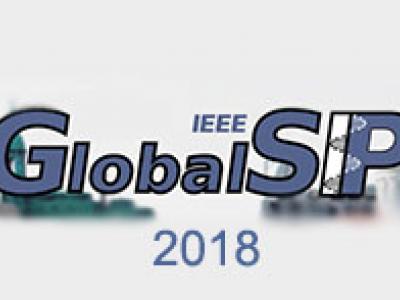
- Read more about ORBITAL ANGULAR MOMENTUM-BASED TWO-DIMENSIONAL SUPER-RESOLUTION TARGETS IMAGING
- Log in to post comments
Without relative motion or beam scanning, orbitalangular-momentum (OAM)-based radar is shown to be able to estimate azimuth of targets, which opens a new perspective for traditional radar techniques. However, the existing application of two-dimensional (2-D) fast Fourier transform (FFT) and multiple signal classification (MUSIC) algorithms in OAM-based radar targets detection doesn’t realize 2-D super-resolution and robust estimation.
- Categories:
 60 Views
60 Views
Satellite system is regarded as important part of 5G networks. Software Defined Satellite Networking (SDSN), utilizing the advantages of Software Defined Networking (SDN), as believed in former work, can provide better performance. Different SDN architectures based on either multi-layer satellite constellation or sing-layer constellation have been proposed and the key technology has been validated. However, characteristics of satellites such as high propagation delay and coverage characteristics pose some problems on the network performance.
poster2.pdf
- Categories:
 24 Views
24 Views
- Read more about Generation of Correlated PSK Waveforms Using Complex Gaussian Random Variables
- Log in to post comments
This work proposes a direct method to generate phase shift keying (PSK) symbols with desired correlation properties by mapping complex Gaussian random variables. The relationship between the cross-correlation of Gaussian and PSK symbols is derived in closed-form. This non-iterative approach outputs finite-alphabet constant-modulus waveforms capable of matching desired transmit beampatterns.
Poster.pdf
- Categories:
 23 Views
23 Views
- Read more about ADAPTIVE CSP FOR USER INDEPENDENCE IN MI-BCI PARADIGM FOR UPPER LIMB STROKE REHABILITATION
- Log in to post comments
- Categories:
 17 Views
17 Views
- Read more about ELECTROPHYSIOLOGICAL SIGNAL PROCESSING FOR INTRAOPERATIVE LOCALIZATION OF SUBTHALAMIC NUCLEUS DURING DEEP BRAIN STIMULATION SURGERY
- Log in to post comments
globalsip.pdf
- Categories:
 218 Views
218 Views
- Read more about Backdoor Attacks on Neural Network Operations
- Log in to post comments
Machine learning is a rapidly growing field that has been expanding into various aspects of technology and science in recent years. Unfortunately, it has been shown recently that machine learning models are highly vulnerable to well-crafted adversarial attacks. This paper develops a novel method for maliciously inserting a backdoor into a well-trained neural network causing misclassification that is only active under rare input keys.
- Categories:
 199 Views
199 Views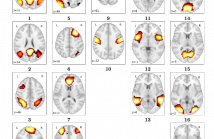
- Read more about HOW MANY FMRI SCANS ARE NECESSARY AND SUFFICIENT FOR RESTING BRAIN CONNECTIVITY ANALYSIS?
- Log in to post comments
Functional connectivity analysis by detecting neuronal coactivation in the brain can be efficiently done using Resting State Functional Magnetic Resonance Imaging (rs-fMRI) analysis. Most of the existing research in this area employ correlation-based group averaging strategies of spatial smoothing and temporal normalization of fMRI scans, whose reliability of results heavily depends on the voxel resolution of fMRI scan as well as scanning duration. Scanning period from 5 to 11 minutes has been chosen by most of the studies while estimating the connectivity of brain networks.
- Categories:
 27 Views
27 Views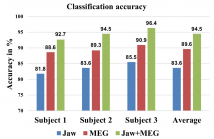
- Read more about OVERT SPEECH RETRIEVAL FROM NEUROMAGNETIC SIGNALS USING WAVELETS AND ARTIFICIAL NEURAL NETWORKS
- Log in to post comments
Speech production involves the synchronization of neural activity between the speech centers of the brain and the oralmotor system, allowing for the conversion of thoughts into
- Categories:
 17 Views
17 Views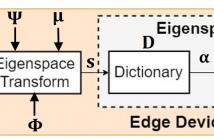
- Read more about Low-Complexity Compressed Analysis in Eigenspace with Limited Labeled Data for Real-Time Electrocardiography Telemonitoring
- Log in to post comments
To achieve real-time electrocardiography (ECG) telemonitoring, we need to overcome the scarce bandwidth. Compressed sensing (CS) emerges as a promising technique to greatly compress ECG signal with little computation. Furthermore, with edge-classification, we can reduce the data rate by transmitting abnormal ECG signals only. However, there are three main limitations: limited number of labeled ECG signal, tight battery constraint of edge devices and low response time requirement.
- Categories:
 24 Views
24 Views
- Read more about Symbol-asynchronous transmission in multibeam satellite user down-link: rate regions for novel superposition coding schemes
- Log in to post comments
We consider the forward link of a multibeam satellite system with
high spectral reuse and the novel low-complexity transmission and
detection strategies from [1]. More specifically, we study the impact
of a time offset between the antenna beams that cooperate to
simultaneously serve a given user. Assuming Gaussian signaling,
we provide closed-form expressions for the achievable rate region.
It is demonstrated that, in the absence of timing information at the
gateway, this region is not affected by a time offset. Our numerical
- Categories:
 3 Views
3 Views